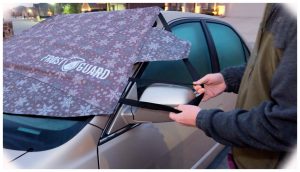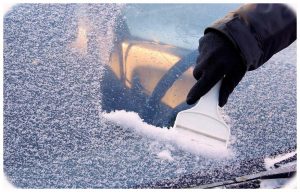Frost on the inside of your windshield can be a major nuisance and even pose safety risks. Frost on the inside of your windshield is caused by a combination of condensation, fog, and frost that builds up due to changes in temperature, humidity, air circulation, and car maintenance. To prevent frost from forming on your windshield, you should park in a garage or under shelter whenever possible, use a windshield cover when parking outside, install a dehumidifier or an air purifier in your car, improve the insulation and ventilation of your car, and keep up with regular maintenance. To remove existing frost from the inside of your windshield, you will need to gather some supplies like ice scrapers or newspapers before beginning. Once you have all the necessary tools, taking certain precautions to ensure safety while removing the frost is important. Finally, several alternative methods for removing frost may work better for some people than using ice scrapers or newspapers such as using warm water or alternatively covering the window with cardboard when parked outside overnight.

Frost on the inside of your windshield can be an annoyance and decrease visibility while driving, especially during nighttime; this can lead to hazardous road conditions. In addition, frost may form an opaque film that blocks the driver’s view and makes it difficult to see clearly.
Causes of Frost on Inside of Windshield
Temperature and Humidity Changes: High temperature and humidity changes over short periods can cause condensation to collect inside an enclosed space like a car, leading to frost formation when the temperature drops significantly.
Poor Insulation and Ventilation: Poor insulation and inadequate ventilation can contribute to frost formation inside a windshield. For example, if gaps are around a car’s windows or doors, cold air can enter the vehicle and cause condensation inside the windshield.
Inadequate Car Maintenance: Neglecting regular maintenance, such as changing air filters regularly or failing to check for cracked seals around windows or doors, could contribute to increased moisture buildup, leading to frost formation.
How To Prevent Frost On Inside Of Windshield
Park Your Car in a Garage or Under a Shelter: Parking your car in an enclosed space such as a garage or carport can help to prevent the collection of moisture inside the car’s cabin and thus reduce the chances of frost formation.

Install a Dehumidifier or Air Purifier: Installing dehumidifiers or air purifiers inside your car can help to reduce the amount of moisture in the air and thus reduce frost formation.
Improve Your Car’s Insulation and Ventilation: Improving your car’s insulation (e.g. using window insulation films) and ensuring proper ventilation (e.g. leaving windows open occasionally) can help to keep moisture levels down and reduce frost formation.
Regular Car Maintenance: Regular maintenance, such as changing air filters on time or checking for cracked seals around windows and doors can prevent moisture buildup, leading to frost formation on interior windshield surfaces.
How To Remove Frost From Your Windshield

Best Practices for Removing Frost: Once you have all the necessary tools, it is important to take certain precautions when attempting to remove the frost from your windshield. Start by scraping gently with an ice scraper from one side of the windshield towards the other in a sweeping motion; use gentle pressure and keep your arm close to your body for maximum control. You should also be sure not to scrape too hard, as this might crack or scratch the glass on your windshield.
Alternative Methods For Removing Frost: If you don’t want to use an ice scraper, several alternative methods can remove frost from the inside of your windshield. For example, using warm water or covering the window with cardboard when parked outside overnight may help reduce frost formation.
Conclusion
Frost on your vehicle’s interior windshield can be a major nuisance as well as pose safety risks. It is important to understand the causes of this problem and how to prevent it to save time and money. To reduce the chances of frost formation on your windshield, make sure to park in a garage or under shelter whenever possible, use a windshield cover when parking outside, install a dehumidifier or air purifier in your car, improve the insulation and ventilation of your car, and keep up with regular maintenance. To remove existing frost from your windshield, you may need some supplies, such as an ice scraper or newspapers, before beginning. Once you have all the necessary tools, taking certain precautions for safety while removing the frost is important. Finally, several alternative methods for removing frost may work better for some people than using ice scrapers or newspaper, such as using warm water or alternatively covering the window with cardboard when parked outside overnight.


Add Comment